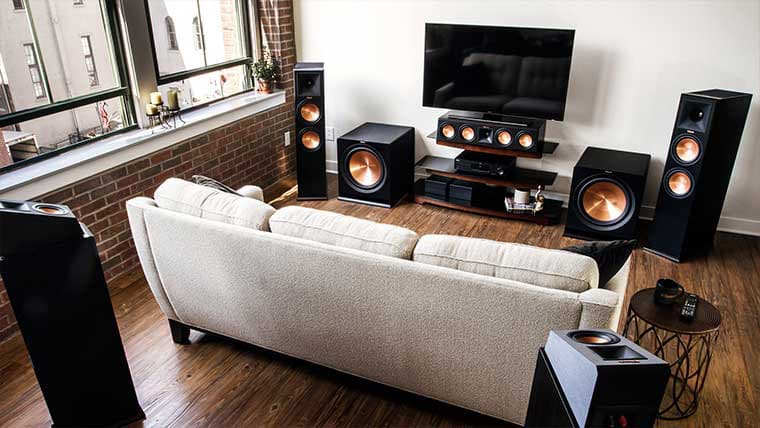A home stereo system can transform any living space into a personal concert hall or movie theater, elevating your entertainment experience with rich sound and high-quality audio. Whether you’re a music enthusiast, a movie buff, or someone who enjoys immersive gaming, investing in the right home stereo system can make a significant difference. In this guide, we’ll explore the components, types, and factors to consider when setting up your ideal whole home audio systems.
What is a Home Stereo System?
A home stereo system is an audio setup that consists of various components designed to deliver high-quality sound in a home environment. It typically includes a receiver or amplifier, speakers, and audio sources (like a CD player, turntable, or streaming device). The goal is to provide clear, immersive sound that enhances your listening experience, whether it’s for music, movies, or other media.
Key Components of a Home Stereo System
- Receiver/Amplifier: This is the heart of your stereo system. The receiver or amplifier takes the audio signal and amplifies it so that the speakers can produce sound at higher volumes. Receivers also often include additional features, such as built-in streaming capabilities, surround sound processing, and multi-room audio support.
- Speakers: The quality of your speakers can make or break your home stereo system. There are several types of speakers to choose from, including floor-standing speakers, bookshelf speakers, and satellite speakers. The choice depends on your space and preferences, with larger speakers typically offering deeper bass and fuller sound.
- Audio Sources: These are the devices that provide the audio signal to your stereo system. Traditional options include CD players, turntables, or even cassette decks, while modern setups often rely on digital sources like streaming devices, Bluetooth-enabled devices, or media players.
- Subwoofer: A subwoofer is a specialized speaker designed to produce low-frequency sounds (bass). While not strictly necessary for all stereo systems, a subwoofer can add depth and impact, especially for movie watching or genres of music with strong bass lines.
- Cables and Connections: High-quality cables are essential to ensure the sound signal is transmitted clearly. Opt for speaker wire, HDMI, or optical cables, depending on the components in your system. Proper connections are crucial to avoid signal loss and interference.
Types of Home Stereo Systems
When choosing a home stereo system, there are different configurations to consider based on your needs, space, and budget:
- Stereo Systems: These are the traditional two-speaker setups. Perfect for those who want high-quality sound without extra complexity. These systems are compact, making them ideal for small spaces or those who want to focus on music.
- Surround Sound Systems: If you want a more immersive experience, surround sound systems are a great choice. These setups include multiple speakers arranged around the room (e.g., a 5.1 or 7.1 system), providing a dynamic and lifelike audio experience for movies and games.
- Wireless Systems: Wireless home stereo systems are growing in popularity due to their convenience and ease of setup. With options like Sonos, Bose, or other Wi-Fi-enabled speakers, you can stream music directly from your smartphone, tablet, or computer without the need for extensive wiring.
- All-in-One Systems: For those looking for a simpler option, all-in-one stereo systems include a receiver, speakers, and audio sources in one convenient package. These systems are ideal for people who don’t want to worry about compatibility or complex setup.
Factors to Consider When Choosing a Home Stereo System
- Room Size: The size of the room where you plan to place your stereo system plays a crucial role in the type of system you should choose. Larger rooms may require floor-standing speakers and more powerful amplifiers, while smaller rooms may benefit from bookshelf speakers or a compact system.
- Audio Quality: Audio fidelity is paramount in choosing the right system. Look for systems with high wattage (to ensure the sound is loud and clear) and good frequency response. A wider frequency range will provide a more balanced sound, with clear highs and deep lows.
- Connectivity: Consider the devices you will connect to the system. Look for systems that offer compatibility with your favorite sources, such as Bluetooth, Wi-Fi, or HDMI. Some systems also include support for voice assistants like Amazon Alexa or Google Assistant for hands-free control.
- Budget: Home stereo systems come in a wide range of prices. High-end systems can cost thousands of dollars, while more budget-friendly options are available for those just looking for better sound than what their TV or phone provides. Determine how much you’re willing to spend and find a system that offers the best value within your price range.
- Design and Aesthetics: Stereo systems come in a variety of designs, from sleek, minimalist looks to more robust, traditional styles. The system’s design should complement your home decor and the available space. Some wireless systems, for example, offer discreet speakers that blend seamlessly with your environment.
Setting Up Your Home Stereo System
- Placement of Speakers: Proper placement of your speakers is essential for achieving optimal sound quality. In a stereo setup, the two main speakers should be placed at ear level, equidistant from your listening position. For surround systems, speakers should be arranged around the seating area for a balanced audio experience.
- Room Acoustics: The acoustics of your room affect how sound travels. Consider adding sound-absorbing materials like carpets or curtains to reduce reflections and improve clarity. The use of speaker stands or mounts can also help improve sound delivery.
- Calibration: Many modern stereo systems come with automatic calibration tools that adjust the audio output for your room’s acoustics. If your system doesn’t have this feature, you can manually fine-tune the settings to get the best sound.
Conclusion
A home stereo system is an investment that can provide years of entertainment. Whether you’re a casual listener or an audiophile, the right setup can drastically improve your music, movie, and gaming experiences.
